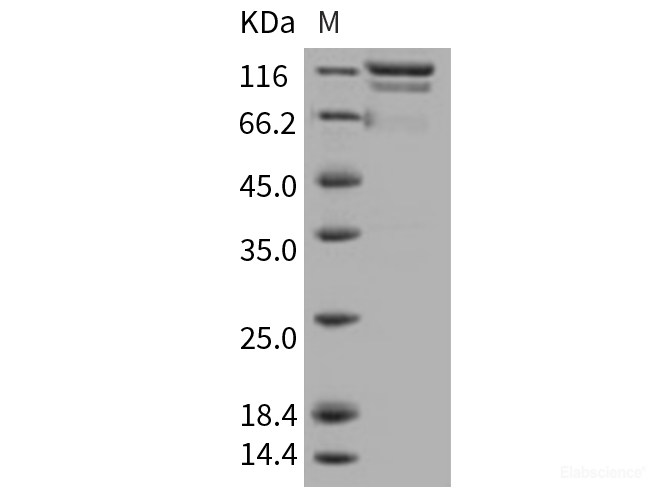Background
C-type lectin domain family 4, member M, also known as DC-SIGNR and CLEC4M, is a type II integral membrane protein that is 77% amino acid identical to DC-SIGN, an HIV gp120-binding protein. Though the encoded gene located in the same chromosome, DC-SIGN is expressed solely on dendritic cells, while DC-SIGNR is predominantly found in liver sinusoidal endothelial cells and lymph node, as well as placental endothelium. DC-SIGNR exists as a homotetramer, and the tandem repeat domain, also called neck domain, mediates oligermerization. DC-SIGNR is ragarded as a pathogen-recognition receptor involved in peripheral immune surveillance in liver, and probably mediate the endocytosis of pathogens which are subsequently degraded in lysosomal compartments. DC-SIGNR appears to selectively recognize and bind many viral surface glycoproteins containing high mannose N-linked oligosaccharides in a calcium-dependent manner, including HIV-1 gp120, HIV-2 gp120, SIV gp120, ebolavirus glycoproteins, HCV E2, and human SARS coronavirus protein S, as well as the cellular adhesion protein ICAM3. DC-SIGNR have been thought to play an important role in establishing HIV infection by enhancing trans-infection of CD4(+)T cells in the regional lymph nodes. It may affect susceptibility to HIV infection by a mechanism that is different in females and males. DC-SIGNR can bind to hepatitis C virus (HCV), and its polymorphism might affect HCV loads supporting the concept that DC-SIGNR contributes to HCV replication efficacy.







